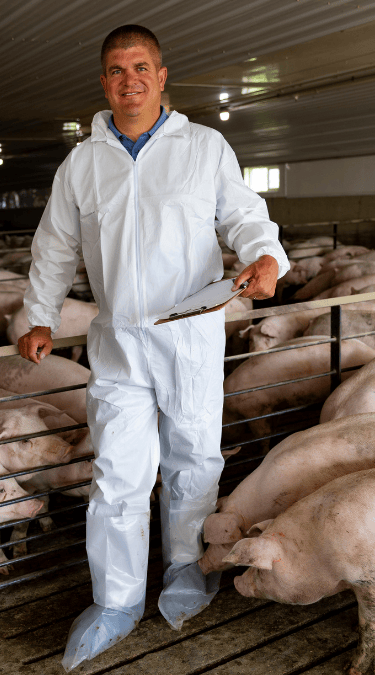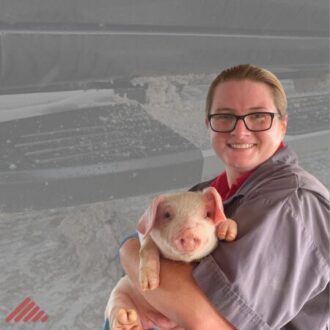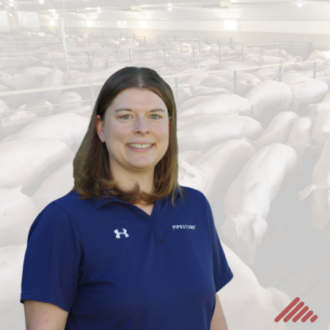As pig farmers, we know that every stage of production, from breeding to finishing, is crucial. But even when we’ve done everything right up until the last few weeks, there’s still a lot of money on the table when it comes to marketing your pigs. This final phase—selling your pigs at the right weight and the right time—can make or break your bottom line. By paying attention to the Coefficient of Variation (CV) and how you sort your pigs, you can turn what might seem like small adjustments into big financial gains.
Understanding CV and Why It Matters
You’ve probably heard terms like CV and sort loss thrown around when looking at your kill sheet. But what do they really mean, and how do they affect your profit?
• Standard deviation measures the range of pig weights in your group, from the lightest to the heaviest.
• CV (Coefficient of Variation) takes that standard deviation and divides it by the average weight of the pigs. This gives you a percentage that tells you how consistent your pigs are in size.
The lower your CV, the more uniform your pigs are. Packers want uniformity because it keeps their processing plants running efficiently. When pigs come in at the right weight, packers reward you. But if your pigs are too heavy or too light, you face penalties, which is where sort loss comes into play.
What’s a Good CV?
If you don’t sort your pigs and just let them go to market at random (what we call a “gate cut”), you could end up with a CV as high as 12%. On the flip side, if you take the time to sort carefully, you can get that CV down to 5%, which is considered excellent. The average for farmers we work with sits at around 7%.
Here’s the kicker: moving from a 10% CV to the average 7% can save you about $5 per pig. For a barn of 2,400 pigs, that’s an extra $12,000. Going from 7% to 5% CV might net you another dollar per pig. While the returns diminish as your CV gets tighter, those small margins can still add up.
How to Improve Your CV and Reduce Sort Loss
So how do you make sure your pigs hit that sweet spot for weight?
- 1) Have a Plan: Before you go into the barn, know how many pigs you want to sort for each load. Don’t just focus on a few pens—spread your selection evenly across the barn to avoid large weight variations.
- 2) Watch the Numbers: Pay attention to feed consumption and days on feed. This can give you an idea of when your pigs are ready to hit that target weight.
- 3) Use Tools if Available: If your barn has scales, use them to fine-tune your sorting process. However, make sure the setup doesn’t interfere with the pigs’ access to feed, as this can slow down their growth.
- 4) Keep an Eye on Health: Health issues can create significant variation in weight. A healthier group of pigs will naturally have less variation, making it easier to hit that ideal CV.
- 5) Plan for the Last Load: The last load out of the barn is often where variation spikes because you’re left with the lightest and slowest-growing pigs. Sorting carefully here or sending these pigs to a different packer or market can help minimize losses.
Why the Packers Care About Consistency
Packers run a high-speed operation, and for them to maintain efficiency, they need pigs that are as uniform as possible. The closer your pigs are to their target weight, the more efficiently the plant can process them, and the more they’re willing to pay you. For example, certain packers might prefer slightly lighter pigs if given the choice, but each packer has its own matrix for determining penalties based on over- or under-weight pigs.
Why It Pays to Focus on Marketing
The time and effort you put into sorting your pigs properly can make a huge difference to your profitability. If you’re letting your pigs run to market without a plan, you’re likely leaving money on the table. But by tightening your CV and hitting the packer’s weight targets, you can maximize your returns.
In today’s tight market, those small gains—whether $5 a pig or even just $1—can be the difference between breaking even and making a profit. By focusing on sorting and reducing variation, you’re not just optimizing your operation—you’re ensuring you’re getting the best possible value for all the hard work you’ve put into raising your pigs.
So next time you’re preparing to market your pigs, ask yourself: “Am I doing everything I can to maximize my profits?” If not, take a closer look at your CV and sort strategy. A little extra effort could mean a big boost to your bottom line.











